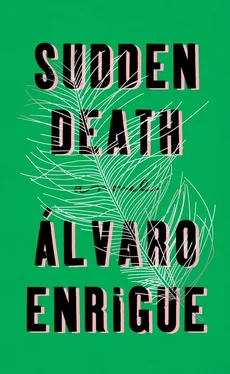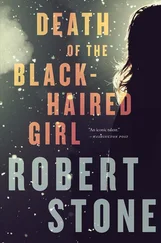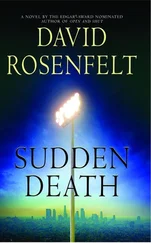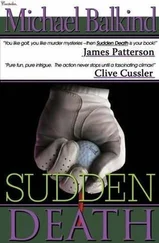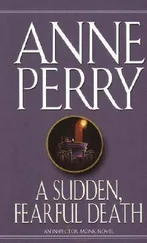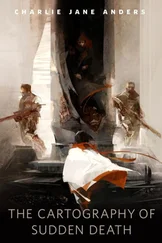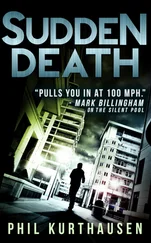In the third decade of the sixteenth century, the capital of the Tenochcas was the tip of a triangle that spread its arms toward the Gulf of Mexico and reached all the way to Spain. Outside the Holy Roman Empire’s triangle of influence, the conquistadors must have been perceived by the majorities that surrounded them as a tribe with an inevitably superior technology of death, but also with less of a thirst for blood than the previous occupants of Mexico’s imperial capital. Not that the recent arrivals were humanists on a mission to improve anyone’s life, but at least they didn’t make sacrifices to frenzied and glamorous gods — lovers of spectacle and gore like none before or since. Their sacrifices were to a bland and pragmatic god called money, statistically more lethal than the four divine Tezcatlipocas put together, but also slower in its means of causing harm.
Vasco de Quiroga was a lawyer of noble birth, schooled in what the court of Charles V considered the Orient, since he had been a judge in Algeria. Because of this experience, he was sent along with other less cosmopolitan judges— oidores , they were called medievally — to bring order to the cynical, thieving, disobedient, and murderous administration of New Spain.
Quiroga had no immediate interest in the Purépecha territory of Mechuacán, west of Mexico City, recently acquired by the Spanish crown. But he must have read and heard many accounts of the destruction of the only empire that had always withstood Aztec onslaughts.
In his first year in New Spain, Quiroga was simply a learned and circumspect judge with an astonishing capacity for work, a notable curiosity about the affairs of the indigenous culture languishing in the city, and little or no interest in playing politics. Disenchanted with the class of landowners who thus far had shared among them the governance of New Spain, Quiroga made friends among the clergy. He was a frequent visitor of Bishop Fray Juan de Zumárraga, who one day — probably when they’d been discussing how to govern the vast territory they didn’t even understand — loaned him a little book written by an Englishman: Utopia .
It’s funny that it was Juan de Zumárraga, ever eager to torture Indians and burn them at the stake, who planted the idea in Judge Quiroga’s head that the indigenous peoples, self-governed in rational fashion, could turn the bone-crushing land that was New Spain into a productive and egalitarian paradise. It’s no exaggeration to say that Zumárraga was a war criminal, a bloodthirsty beast, a crazy drug-cartel boss. The zeal with which he persecuted the native Americans for heresy was so scandalous that Charles V himself had to sign a decree indicating that Indians couldn’t be heretics because they were new converts, and prohibiting them from being put on trial by the Inquisition.
If Carlo Borromeo was the very incarnation of the ideology of the Counter-Reformation, Fray Juan de Zumárraga was his sharpest instrument on the other side of the world. Both of them were bishops consecrated — perhaps irresponsibly — by Pope Pius IV, who, as the last Renaissance sybarite, slayed one world and founded another.
The future first archbishop of Mexico was a long-limbed native of Biscay. Someone should make a typology of the raging Counter-Reformers: all of them were gaunt and somewhat common-looking people, men who did their work with an excessive zeal that surely no one demanded of them, who took seriously things that had been proposed and set down only for appearance’s sake. Zumárraga may also have been the only incorruptible Spanish subject with whom Charles V — always surrounded by yes-men — ever managed to speak.
When Fray Julián Garcés, the first bishop of Mexico, retired at seventy-five — he was named to the seat so early that he established the diocese in Tlaxcala because Tenochtitlan still reeked of death — Zumárraga was named to the post. The emperor forced through his candidacy, popped a miter on his head, and shoved him off to America with the novel charge of “protector of Indians”—which he in fact was, so long as the Indians didn’t display behavior suggestive of heresy.
Despite being a provincial man without political experience, Zumárraga had great instincts. He had hardly arrived in New Spain when he realized that the archdiocese had to be moved to Tenochtitlan — it wasn’t yet clear at the time what the new kingdom’s capital would be — and he settled it in the Convento de San Francisco at Mexico City, where the Torre Latinoamericana stands today.
On this spot, he moved into the cell of a common friar, bestowed on the Mexican Church the structure it has today, signed death sentence after death sentence with his bony hand, and realized that for the Christian faith to catch on, faces of saints and virgins would have to be painted brown and Catholic temples erected where Mexican places of worship had once stood.
Fray Juan didn’t only have a thirst for fire. It was he who wrote the letter to the king of Spain describing the outrages of the Primera Audiencia government against the Indians, and it was he who came up with the plan of embedding the letter in a cake of wax and sending it hidden in a barrel of oil. With this wise and valiant act, he kept his promise of protecting the Indians — or at least the Indians he didn’t think deserved to burn at the stake.
It’s true that he burned all the indigenous codices that fell into his hands, considering them “things of the Devil.” His fervor even took an investigative turn in matters of traditional medicine and the herbal arts: he did away with as many healers as he could, and silenced their apprentices. It was because of him that in a single generation the medical knowledge accumulated over thousands of years in central Mexico was lost. On the other hand, he had a passion for the books of learned men of the sort that he may have wished to be. When he left the Convento de San Francisco to move to the brand-new archdiocese built from the very stones of Tenochtitlan’s Templo Mayor, he found the money to ensure that his primitive office and cell were jammed with books that he’d had sent from Spain: he was the founder of the first library in continental America. It was he who designed and shepherded the creation of the Universidad Pontificia de México, and he who bought and installed the first American printing press in the archdiocese.
All this happened once his battles were won and the lawyer Vasco de Quiroga was the unexpected bishop of Michoacán. Before this, when Quiroga and Zumárraga surely met at the office of the archdiocese in the Convento de San Francisco, both men (one of letters, the other aspiring to the name) were overwhelmed by a royal mandate that simply didn’t seem feasible: transforming supine Mexico into something functional and resembling Europe. It was during one of these conversations that Zumárraga gave Quiroga the little book by Thomas More — evidence of this is the tome itself, which contains the notes of both men and can still be consulted in the rare books collection of the library at the University of Texas at Austin.
Exercitatio linguae latinae

“In Paris do they play the way we play here?”
“With some variations: the Master of the Game gives the players shoes and caps.”
“What are they like?”
“The shoes are made of felt.”
“They would be of no use here.”
“Here, of course, the game is played on streets strewn with stones; in France and Flanders they play on tile floors, flat and even.”
“And what sort of balls do they play with?”
“Almost none are filled with air, as they are here; they are smaller than the balls you know, and harder, of white leather; they are stuffed with dog hair, not the hair of men done to death; and that is why the players hardly ever strike the ball with their palms.”
Читать дальше
